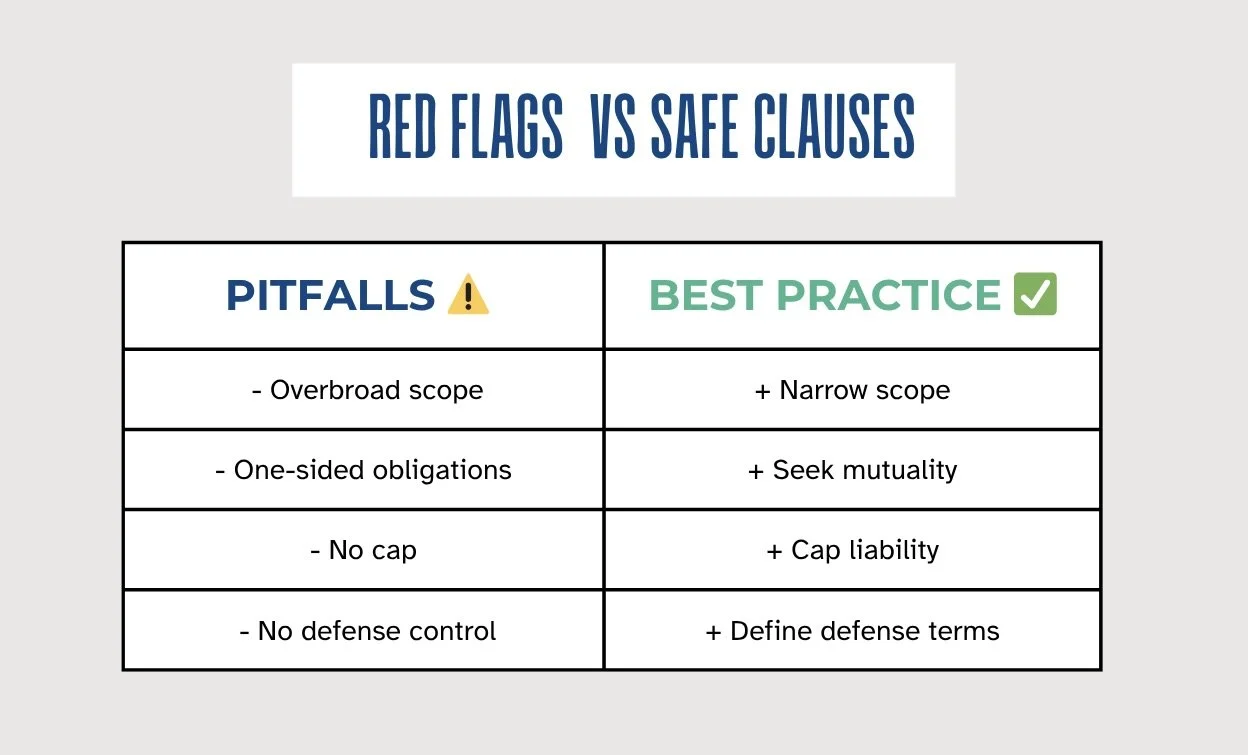Indemnification Clauses: An Overlooked Risk in Vendor Agreements
When businesses enter into vendor agreements, much of the negotiating energy focuses on pricing, timelines, and deliverables. However, in the boilerplate language in the rest of the contract, there are often clauses that can create substantial financial exposure, including an indemnification clause.
What Is an Indemnification Clause?
An indemnification clause is a contractual provision that obligates one party (the indemnitor) to compensate the other party (the indemnitee) for certain costs or losses. These may arise from third-party claims, breach of contract, negligence, or other specified events.
In vendor agreements, indemnification often comes into play when a product or service provided by the vendor causes harm to a third party, such as a customer or regulatory body.
For example:
"Vendor shall indemnify, defend, and hold harmless Client from and against any and all claims, damages, losses, or expenses arising out of or related to Vendor’s performance under this Agreement."
Sounds reasonable? Not always.
Why Indemnification Clauses Matter
While indemnity language may seem benign, its implications can be significant. A poorly drafted or misunderstood indemnity clause can leave a business exposed to:
Uncapped liability
Legal fees and defense costs, even before any wrongdoing is proven
Obligations for third-party claims outside your control
Responsibility for the other party’s negligence
For start-ups, indemnification clauses can lead to hefty financial and legal consequences.
Common Pitfalls in Indemnification Clauses
1. Overbroad Scope
Clauses that indemnify against “any and all claims” without limitation can force a party to pay for losses unrelated to their actual performance or fault. Watch for ambiguous or sweeping language.
2. One-Sided Obligations
Many vendor agreements push indemnification obligations solely onto the vendor. This may be reasonable in some cases, but without reciprocal protection, the client may be left holding the bag for its own exposure.
3. No Control Over Defense
A clause may require indemnification but give the indemnified party sole control over the defense and settlement. This leaves the indemnifying party footing the bill without a say in how the case is handled.
4. Failure to Exclude Consequential Damages
Some indemnity clauses implicitly include consequential or indirect damages, which can exponentially increase potential liability.
5. No Cap or Time Limitation
An unlimited indemnity with no expiration is a ticking time bomb. Clauses should include liability caps and survival periods.
Best Practices for Managing Indemnification Risk
1. Read the Fine Print Carefully
Never treat indemnity language as boilerplate. Review it in context and assess the real-world risk it allocates.
2. Seek Mutuality
Where appropriate, indemnification should be reciprocal. If the vendor indemnifies the client for certain acts, the client should offer similar protections in return.
3. Limit Scope and Exposure
Negotiate narrower language: limit indemnification to losses caused by gross negligence, willful misconduct, or breach of specific representations. Cap liability, and exclude incidental or consequential damages unless clearly justified.
4. Include Defense and Settlement Terms
Clarify who controls the defense, who pays for it, and whether settlement requires consent. This ensures practical handling of claims when they arise.
5. Align with Insurance Coverage
Make sure indemnification obligations are covered under your insurance policies (e.g., general liability, cybersecurity, E&O), and request the same of your vendor.
Conclusion: Don’t Disregard Indemnity
In the rush to close deals and launch projects, it’s easy to skim past legalese that feels removed from daily operations. But indemnification clauses are more than just filler: they are a core risk allocation tool that can determine who bears the brunt of financial and legal responsibility when things go wrong. Whether you're drafting, reviewing, or negotiating a vendor agreement, treat indemnification clauses with the scrutiny they deserve.

